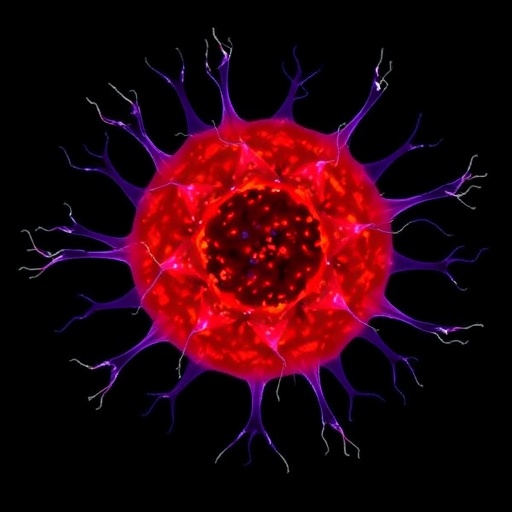Combining MEK inhibition, checkpoint blockade and tumor-killing virus produces markedly better responses in animal cancer models
A study by a team led by a Massachusetts General Hospital (MGH) investigator finds evidence that combining three advanced treatment strategies for malignant melanoma – molecular targeted therapy, immune checkpoint blockade and the use of tumor-targeting viruses – may markedly improve outcomes. Their report of experiments in cellular and animal models is being published in Science Translational Medicine.
“We found that use of the oncolytic virus T-VEC significantly enhanced therapeutic response and tumor cell killing when combined with a MEK inhibitor and that adding a PD-1 blocker to that regimen further improved therapeutic responses,” says Howard Kaufman, MD, of the MGH Division of Surgical Oncology, senior author of the report. “All three agents we used are already FDA approved, so our study provides justification for using them in combination. A clinical trial to examine this three-drug regimen should be a priority.”
Around half of all melanomas are driven by mutations in the BRAF gene, and drugs that inhibit BRAF or MEK – another gene in the same pathway – have significantly improved outcomes for many patients. But treatment resistance often develops, particularly when several BRAF/MEK inhibitors are combined. Immune checkpoint inhibitors targeting molecules like PD-1 that prevent the immune system from attacking tumors have also led to major improvements, but combining checkpoint inhibitors can have toxic effects. Oncolytic viruses, which can directly infect and kill tumor cells and activate innate and adaptive immunity, are another way of directing the immune response against cancer. The virus used in this study, was the first and is still the only to receive FDA approval, based on a clinical trial led by Kaufman when he was at the Rutgers Cancer Institute.
In the current study, he and his colleagues first investigated the potential of combining the BRAF inhibitor vemurafenib with T-VEC in both human melanoma cell lines and mouse models of melanoma. While that combination led to increased cell killing in BRAF-mutated cell lines, the investigators were surprised to find that combining T-VEC with the MEK inhibitor trametinib – originally used as a control – increased cell death in both BRAF-mutated and unmutated melanoma cell lines. They then verified these improved results in an immune competent mouse model of melanoma and identified several aspects of the underlying mechanism, including its reliance on both cytotoxic CD8+ T cells and a group of dendritic cells and the generation of an inflammatory response characterized by increased PD-1 and PD-L1 expression.
That observation led them to try the triple combination of T-VEC, trametinib and a PD-1-targeting monoclonal antibody, which led to even greater tumor eradication in a melanoma mouse model. Overall, while the use of T-VEC or MEK inhibitor trametinib alone produced a treatment response in around 20 percent of animals, combining the two increased the response rate to 50 percent, and the triple therapy to almost 100 percent. The researchers also tested both double and triple combinations in a mouse model of colon cancer and observed similar results – survival was significantly improved when T-VEC was combined with either trametinib or anti-PD-1, and the triple combination complete eradicated the tumor in all mice treated.
“While we still don’t know the mechanisms behind effects such as the improved response against tumors that lack BRAF mutations, an interaction between T-VEC and trametinib appears to be involved,” says Kaufman. “The data from the colon cancer models suggests this combination has potential beyond treatment of melanoma. Now we need to develop appropriate clinical trials to see if this approach will benefit patients with melanoma and other types of cancer.”
###
The lead author of the Science Translational Medicine paper is Praveen Bommareddy, MS, Rutgers Cancer Institute. Additional co-authors are Salvatore Aspromonate and Andrew Zloza, MD, PhD, Rutgers Cancer Institute, and Samuel Rabkin, PhD, MGH Neurosurgery. The study was supported by a grant from Amgen, Inc, and by National Institutes of Health grant R01 CA160762. Rutgers University has submitted a patent application for the triple combination therapy described in this paper.
Massachusetts General Hospital, founded in 1811, is the original and largest teaching hospital of Harvard Medical School. The MGH Research Institute conducts the largest hospital-based research program in the nation, with an annual research budget of more than $900 million and major research centers in HIV/AIDS, cardiovascular research, cancer, computational and integrative biology, cutaneous biology, genomic medicine, medical imaging, neurodegenerative disorders, regenerative medicine, reproductive biology, systems biology, photomedicine and transplantation biology. The MGH topped the 2015 Nature Index list of health care organizations publishing in leading scientific journals and earned the prestigious 2015 Foster G. McGaw Prize for Excellence in Community Service. In August 2018 the MGH was once again named to the Honor Roll in the U.S. News & World Report list of “America’s Best Hospitals.”
Media Contact
Katie Marquedant
[email protected]
617-726-0337




